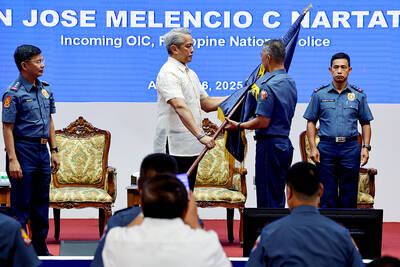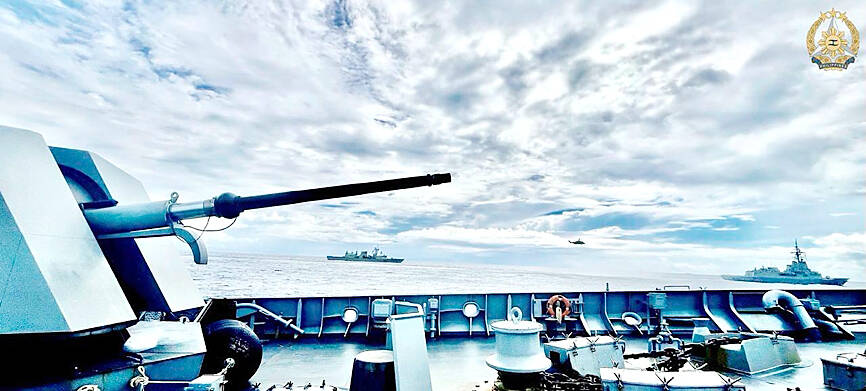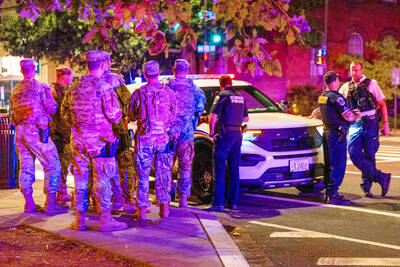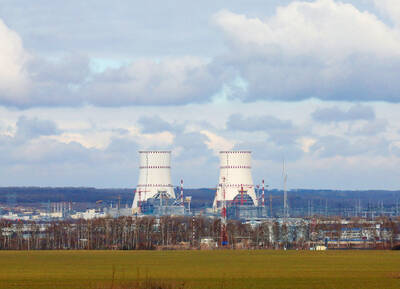From Colombia, Peru and Bolivia through Mexico and on to a half dozen west African states, the new cocaine supply route — and the war against it — is leaving a trail of mayhem in its wake.
In Peru, Shining Path guerrillas have revived their movement by trading in Maoist ideology for coca cultivation and links with Mexican cartels, driving cocaine production to its highest level in a decade, according to US figures.
In Colombia, shadowy new groups with names such as the Black Eagles have muscled into the gap left by a government assault on rightwing militias and leftwing guerrillas, the groups that traditionally trafficked cocaine. Production is increasing after being reined in earlier in the decade.
In Bolivia coca cultivation increased by 5 percent in 2007, a much smaller rise than in Colombia. The strategy of Bolivian President Evo Morales, an indigenous coca farmer and Washington critic, has been unique: Expel US counter-narcotic agents, let farmers grow coca for uses such as tea and medicine and order local security forces to root out the cocaine element. The government will lobby the UN this week to decriminalize the coca leaf.
The traffickers are extremely versatile, using fast boats that outrun coastguard patrols and fiberglass submarines.
Routes evolve to exploit law enforcement gaps. Venezuela has become a hub, with 282 tonnes of Colombian cocaine slipping through in 2007, four times higher than in 2004, according to US officials. West Africa is estimated to be the stop-off point for between a third and half of the cocaine bound for Europe. Colombia recently dispatched narcotics agents to west Africa and played host to police from seven African countries.
With profit margins of up to 5,000 percent, cocaine traffickers make fortunes. The cost to Latin America is incalculable. Every stage of the trade inflicts damage.
Armed groups seeking land for coca have cleared rainforest and killed and evicted the people who live there. Some 270,000 Colombians were forced to flee their homes in the first half of last year, according to human rights group CODHES — a 41 percent jump on the previous year.
Nicaraguan fishermen coyly refer to the “white lobster” that for some transformed shacks into mansions with satellite dishes.
“Narco-traffickers can’t have that size of market unless they are paying big protection money,” said Terry Nelson, cofounder of Law Enforcement Against Prohibition, who spent 32 years fighting drugs as a US government agent stationed in Latin America.
“All along I knew we weren’t making any progress,” he said.
“But I was just a field commander. The big shots in Washington with their triple PhDs just told me to shut up.”

Philippine President Ferdinand Marcos Jr has fired his national police chief, who gained attention for leading the separate arrests of former Philippine president Rodrigo Duterte on orders of the International Criminal Court and televangelist Apollo Carreon Quiboloy, who is on the FBI’s most-wanted list for alleged child sex trafficking. Philippine Executive Secretary Lucas Bersamin did not cite a reason for the removal of General Nicolas Torre as head of the 232,000-member national police force, a position he was appointed to by Marcos in May and which he would have held until 2027. He was replaced by another senior police general, Jose

STILL AFLOAT: Satellite images show that a Chinese ship damaged in a collision earlier this month was under repair on Hainan, but Beijing has not commented on the incident Australia, Canada and the Philippines on Wednesday deployed three warships and aircraft for drills against simulated aerial threats off a disputed South China Sea shoal where Chinese forces have used risky maneuvers to try to drive away Manila’s aircraft and ships. The Philippine military said the naval drills east of Scarborough Shoal (Huangyan Island, 黃岩島) were concluded safely, and it did not mention any encounter with China’s coast guard, navy or suspected militia ships, which have been closely guarding the uninhabited fishing atoll off northwestern Philippines for years. Chinese officials did not immediately issue any comment on the naval drills, but they

POWER CONFLICT: The US president threatened to deploy National Guards in Baltimore. US media reports said he is also planning to station troops in Chicago US President Donald Trump on Sunday threatened to deploy National Guard troops to yet another Democratic stronghold, the Maryland city of Baltimore, as he seeks to expand his crackdown on crime and immigration. The Republican’s latest online rant about an “out of control, crime-ridden” city comes as Democratic state leaders — including Maryland Governor Wes Moore — line up to berate Trump on a high-profile political stage. Trump this month deployed the National Guard to the streets of Washington, in a widely criticized show of force the president said amounts to a federal takeover of US capital policing. The Guard began carrying

Ukrainian drone attacks overnight on several Russian power and energy facilities forced capacity reduction at the Kursk Nuclear Power Plant and set a fuel export terminal in Ust-Luga on fire, Russian officials said yesterday. A drone attack on the Kursk nuclear plant, not far from the border with Ukraine, damaged an auxiliary transformer and led to 50 percent reduction in the operating capacity at unit three of the plant, the plant’s press service said. There were no injuries and a fire sparked by the attack was promptly extinguished, the plant said. Radiation levels at the site and in the surrounding